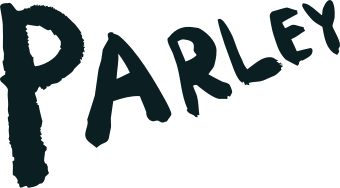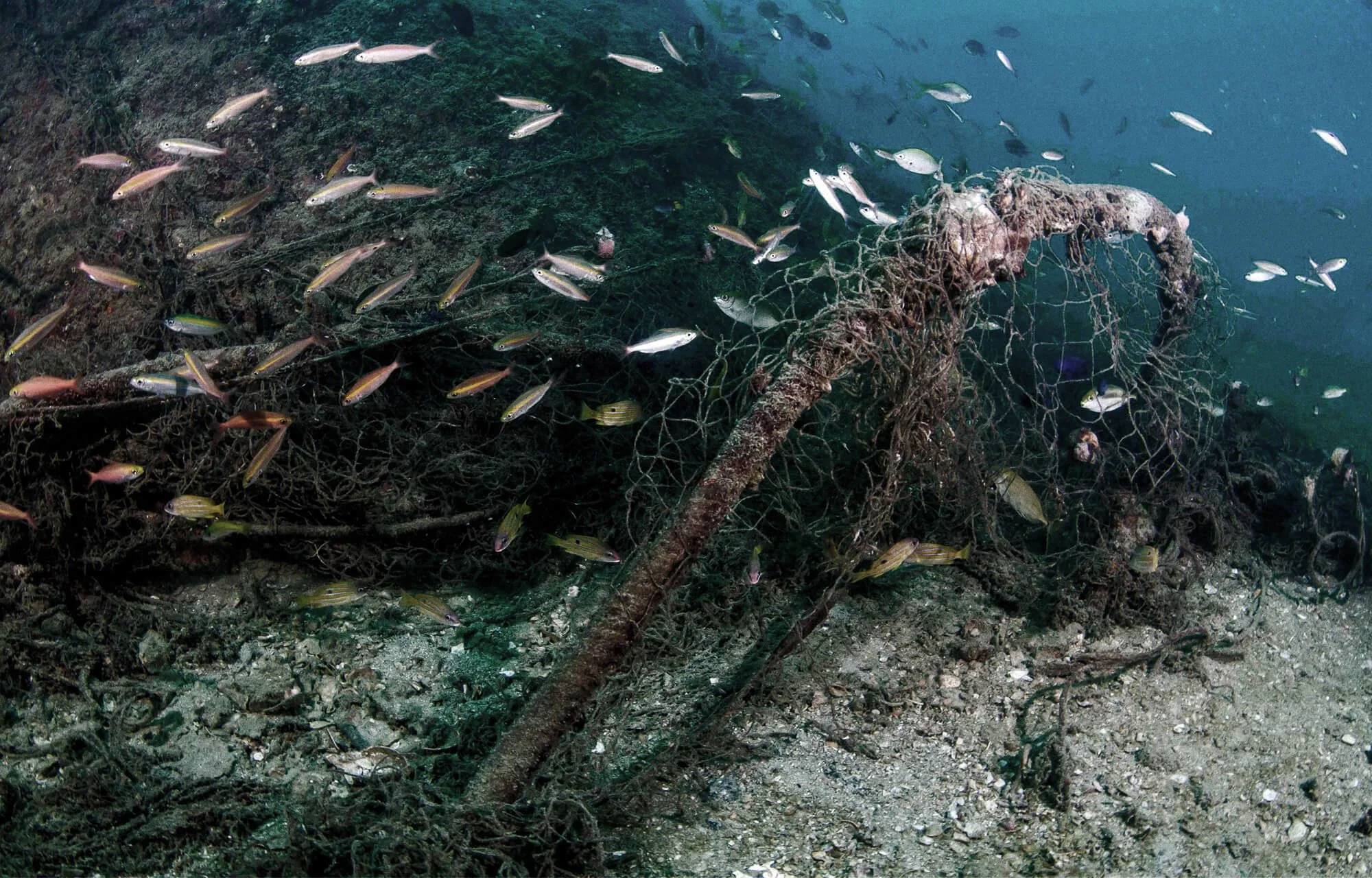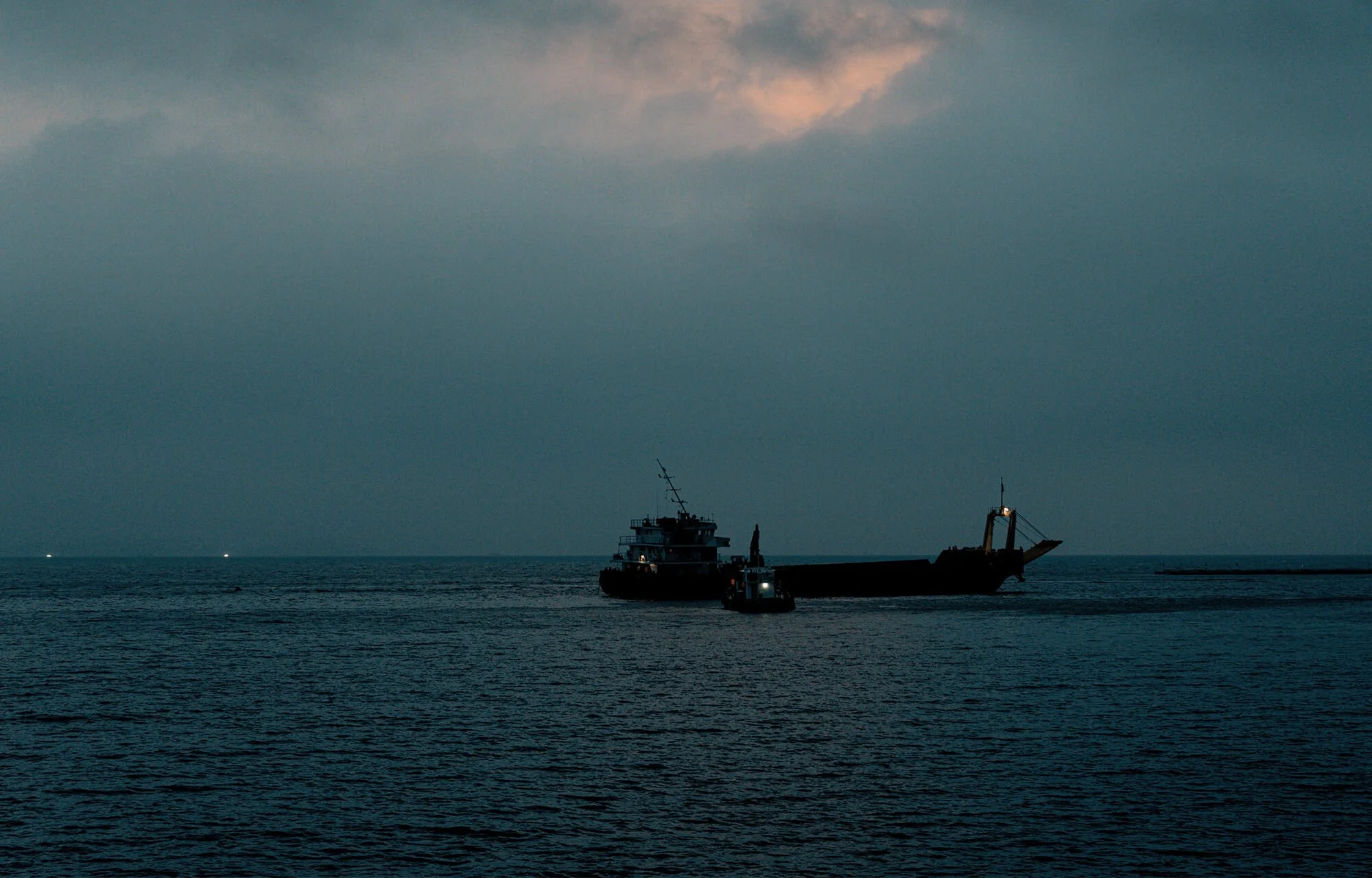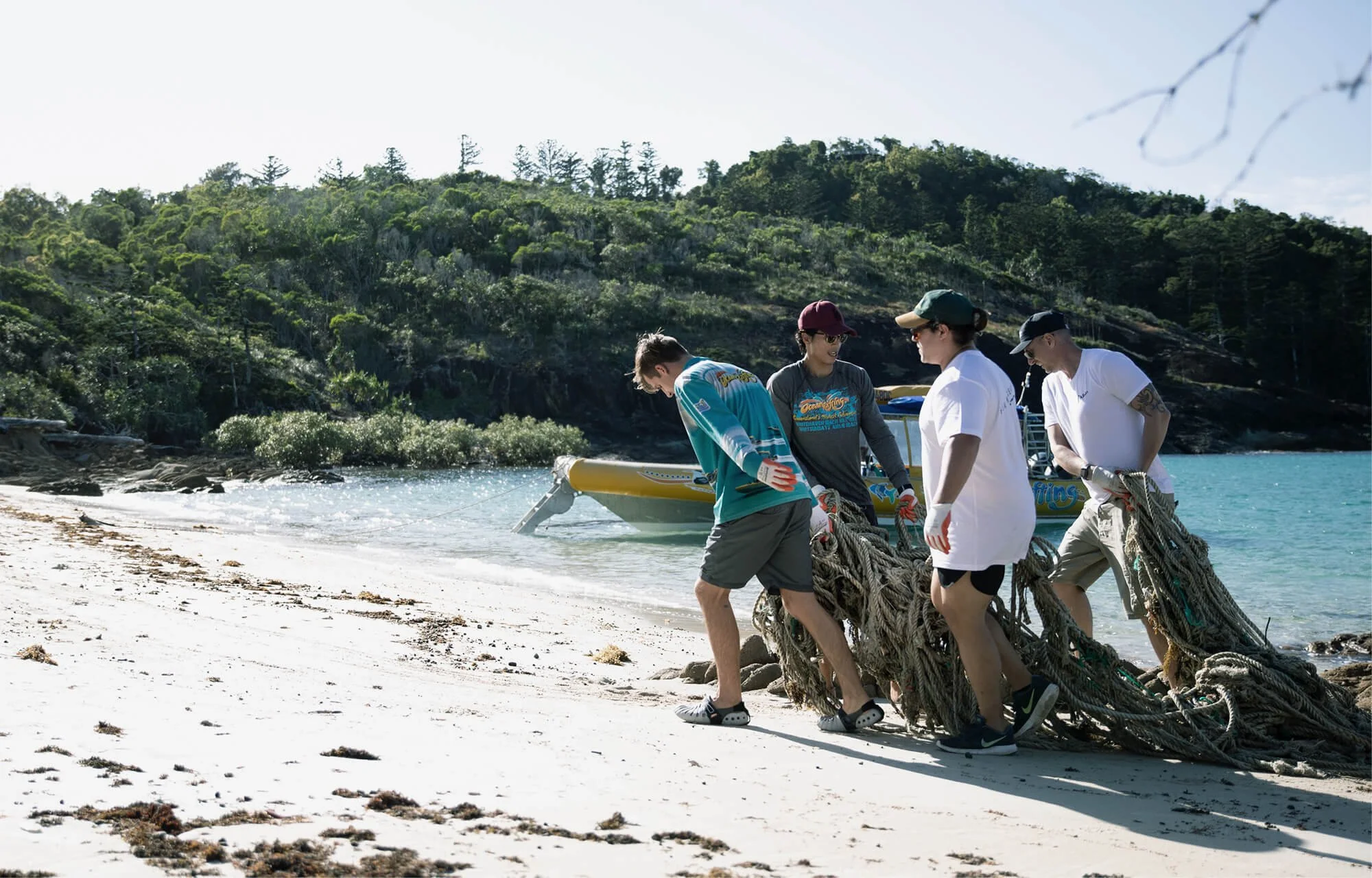Parley AIR: Bottom Trawling
Every year, heavy trawling nets scrape an area of the ocean floor larger than the size of Canada – disturbing carbon stored in the seabed, destroying corals and sponges and decimating marine life
Marine ecosystems around the world are under threat from the combined and related pressures of plastic pollution, climate change and overfishing. Highly wasteful and destructive fishing practices, in particular, are decimating our oceans. Fish populations are replenishing more slowly than we’re taking them from the seas – while other sea creatures are getting caught in nets when they are not the intended target. The number of overfished stocks throughout the world has tripled in the last 50 years, and today one-third of the world's assessed fisheries are overfished, pushed beyond their biological limits.
One of the worst culprits is bottom trawling. Every year, heavy trawling nets scrape an area of the ocean floor that’s larger than Canada and, by disturbing the seabed, release carbon stored in the sediment, destroy fixed corals and sponges and indiscriminately capture marine organisms. As Sir David Attenborough put it in his recent Ocean documentary: “It's hard to imagine a more wasteful way to catch fish.”
In this AIR Guide, we’re diving deep into why bottom trawling is so incredibly destructive, what various nations are doing in response and how you can get involved.
Take the Parley AIR Pledge and receive our newsletter
The most wasteful way to catch fish
Bottom trawling nets are massive: the biggest ones stretch over the size of 1.5 American football fields in width. Their use is incredibly common and extremely destructive: boats drag these weighted nets across the seafloor, sometimes up to 1,300 feet below the surface. Anything that goes into the net and cannot fit through its holes gets trapped. The fishing practice destroys the very ecosystems it seeks to exploit – a single net can damage as much as 600 square miles of ocean floor, and the biodiversity it harbors, in a single day.
Bottom trawling often targets highly commercial seafood like shrimp and cod, but these are far from the only sea life caught in the crosshairs. Trawling nets capture not only the target species, but a lot of others, both in huge quantities. In some shrimp fisheries, as much as 90% of life caught in bottom trawling nets is bycatch. About one quarter of all seafood caught annually, that’s around 19 million tons, is caught using the technique. Millions more tons of illegally-caught fish likely go unreported.
Few types of marine life are spared. Everything from sea turtles to sponges, anemones to corals, marine mammals and sharks – all die in bottom trawling nets. These losses have a domino effect and can devastate all stages of the food chain. Huge areas of our oceans become wastelands that can take centuries to recover, if they recover at all.
Destroying our greatest carbon sink
As Earth’s largest carbon sink, the oceans store massive amounts of carbon dioxide. Our seas have absorbed a full quarter of the carbon dioxide (CO2) released since humans started burning fossil fuels during the Industrial Revolution. They’ve also trapped around 90% of the excess heat created by climate warming gasses.
A lot of this carbon dioxide is locked away in sediment resting on the seafloor. Anything that disturbs this sediment has the potential to release this CO2 back into the ocean water and the atmosphere. As heavy nets drag across the bottom of the oceans, they disrupt these fragile CO2 reserves – which would otherwise sink deeper and become locked away for millennia.
Scientists estimate that around half of the CO2 unlocked by bottom trawling will reach the ocean surface within a decade, adding to the planet’s already dire climate situation. By some estimates, bottom trawling could release as much CO2 into the atmosphere every year as the entire aviation industry, though the exact figures have been disputed, due to the exact way carbon is released from the seabed and how much is stored deeper down.
A future without bottom trawling
Very little of the ocean is safe. Only about 8% of the global oceans have been designated for protection, and only about 3% of them are highly or fully protected from activities like fishing, oil exploration and mining. There is still a long way to go, but countries around the world are making moves towards limiting or outright banning where corporations can bottom trawl. Some are already decades into bans and others are proposing new bans or restrictions…
Venezuela
In 2009, Venezuela became the first country to completely ban industrial trawling in its territorial waters and Exclusive Economic Zone (EEZ), while Hong Kong followed suit back in 2011. Palau also completely outlawed bottom trawling in its territorial seas and EEZ – and their ban even extends to any operations by Palauan-registered vessels operating in other parts of the world.
Great Barrier Reef Marine Park
Other countries have specifically restricted where corporations can carry out bottom trawling. Australia banned the practice in the Tasmanian Seamounts Marine Reserve, the Great Australian Bight Marine Park and the Great Barrier Reef Marine Park in 1999. Since 2002, Canada has protected vulnerable coral ecosystems in areas like the Northeast Channel and the Gully MPA.
The Aleutian Islands
The U.S. has a patchwork of laws regarding bottom trawling. Since 2005, more than 95% of the Aleutian management area in Alaska has been closed to bottom trawling, though certain pockets of historically fished zones do remain open. Six small coral garden areas are closed to all bottom-contact gear. Bottom trawling is also banned in more than half of U.S. federal waters. The Frank R. Lautenberg Deep‑Sea Coral Protection Area, which covers about 38,000 square miles of ocean between New York and North Carolina, bans all bottom-contact fishing gear in designated coral habitat zones.
The Mediterranean Sea
In 2016, after coordinated campaigns by NGOs, the European Union banned bottom trawling below 800 meters. Certain ecologically sensitive areas off the coasts of Italy, Cyprus and Egypt are closed to fishing, though illegal bottom trawling remains an issue in the Mediterranean Sea. In 2024, Greece became the first European country to ban bottom trawling in marine parks. The law will start protecting national parks in 2026 and all marine parks by 2030. Sweden will ban bottom trawling in its marine protected areas, nature reserves, biotope protection areas and Natura 2000 areas starting in 2026.
“The idea of bulldozing a rainforest causes outrage, yet we do the same underwater every day. Surely you would argue it must be illegal.”
Sir David Attenborough
Parley Australia volunteers intercepting fishing gear
Take Action
Celebrating progress is important, but we still need to push for much broader protections. In the summer of 2025, the U.K. parliament’s environmental audit committee called for a ban on bottom trawling for fish in nearly 180 marine protected areas –– which, despite what their name suggests, are open to fishing. But the U.K. government ultimately decided to only ban bottom trawling in some parts of these protected areas, leaving much of them open to the destructive fishing tactic. The same is true for so many countries around the world.
New Zealand is one of the few nations that still allows bottom trawling on seamounts, which are home to dense corals and rich biodiversity. New Zealanders can sign this petition asking their government to ban the practice, while anyone in the world can help by signing this one.
You can also urge the EU Commission to end destructive fishing in protected waters. Bottom trawling is still allowed in some of Europe’s most fragile underwater ecosystems, including Marine Protected Areas (MPAs). Broadly protecting more of our ocean biosphere can also protect more parts of our oceans from bottom trawling. Tell world leaders you want them to protect 30% of our oceans by 2030.
Finally, if you eat seafood, aim to only buy locally-caught species when you can, and look for labels from third-party groups that certify certain fish, crustaceans and shellfish have been sustainably caught.
IG @parley.tv | FB @parleyforoceans
#ParleyAIR







































